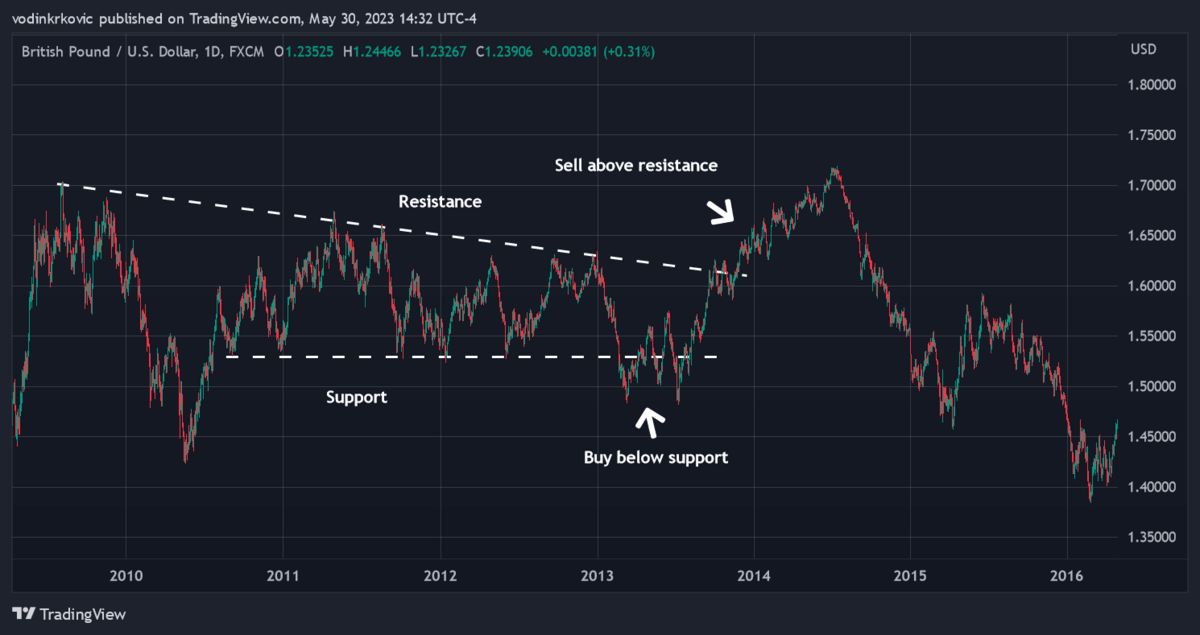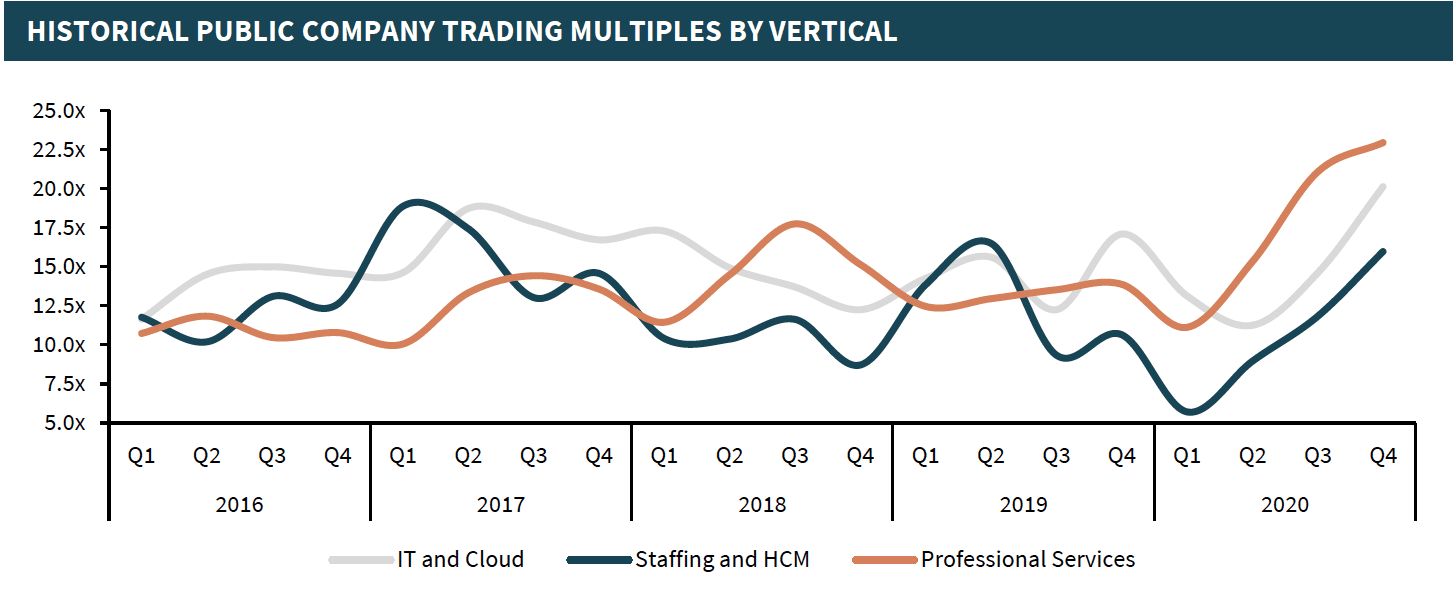Introduction
Trading options is an exciting and potentially lucrative venture for individuals looking to make money in the financial markets. Options provide traders with the opportunity to profit from price fluctuations in various assets, such as stocks, currencies, and commodities. However, it is important to understand the fundamentals of options trading and manage your risk effectively.
Options are derivative contracts that give the buyer the right, but not the obligation, to buy (call option) or sell (put option) an underlying asset at a specified price (strike price) within a predetermined time frame (expiration date). This flexibility allows traders to take advantage of market movements and potentially generate profits.
As with any form of investment, options trading involves a level of risk. Before diving into the world of options, it is crucial to familiarize yourself with the terminology and understand the potential rewards and risks associated with this type of trading.
One of the key factors to consider when getting started with options trading is the amount of capital you are willing to invest. While there is no fixed requirement, having sufficient capital is essential for implementing various options strategies and managing potential losses.
The potential profitability of options trading varies depending on several factors, including market conditions, the underlying asset’s volatility, and the chosen trading strategy. Understanding these factors and having realistic profit expectations are vital for long-term success in options trading.
In this article, we will delve into the world of options trading, exploring the potential profits that can be made and providing insights into the various factors that influence trading profits. Whether you are a beginner or an experienced trader, understanding the dynamics of options trading profits can help you make informed decisions and optimize your trading strategies.
Stay tuned as we explore the ins and outs of options trading and provide you with essential tips and strategies to maximize your potential profits while managing your risk effectively.
What are options?
Options are financial derivatives that derive their value from an underlying asset, such as stocks, currencies, commodities, or indices. They provide traders with the opportunity to profit from price movements in the underlying asset without actually owning the asset itself.
There are two types of options: call options and put options. A call option gives the buyer the right, but not the obligation, to buy the underlying asset at a specified price, known as the strike price, before the expiration date. Conversely, a put option gives the buyer the right, but not the obligation, to sell the underlying asset at the strike price before the expiration date.
Options provide traders with flexibility and leverage. By purchasing options, traders can benefit from both upward and downward price movements in the underlying asset. This versatility allows for various trading strategies, including speculation, hedging, and income generation.
Options have a limited lifespan and expire on a specified date. The expiration date determines the period during which the buyer can exercise the option. If the option is not exercised by the expiration date, it becomes worthless, and the trader loses the premium paid to purchase the option.
Options trading involves the buyer and seller entering into a contract. The buyer pays a premium to the seller in exchange for the right to buy or sell the underlying asset. The seller, also known as the writer, receives the premium and assumes the obligation to fulfill the buyer’s request if the option is exercised.
In summary, options are financial instruments that allow traders to profit from price movements in underlying assets without owning the assets. They provide traders with flexibility, leverage, and various trading opportunities. However, it is important to understand the mechanics of options trading and the factors that influence option prices to make informed trading decisions.
Basic options terminology
When venturing into options trading, it is essential to familiarize yourself with the basic terminology associated with this financial market. Understanding these terms will help you navigate the options landscape and communicate effectively with other traders and brokers.
1. Call Option: A call option is a type of options contract that gives the holder the right to buy the underlying asset at a specified price (strike price) within a specific timeframe (expiration date).
2. Put Option: A put option is a type of options contract that gives the holder the right to sell the underlying asset at a specified price (strike price) within a specific timeframe (expiration date).
3. Strike Price: The strike price, also known as the exercise price, is the predetermined price at which the underlying asset can be bought or sold, depending on the type of option.
4. Premium: The premium is the price paid by the buyer to the seller of an option contract. It represents the cost of acquiring the rights associated with the option.
5. Expiration Date: The expiration date is the last date on which the buyer of an option can exercise their right to buy or sell the underlying asset based on the terms of the option contract.
6. In-the-Money (ITM): An option is considered in-the-money when its strike price is favorable to the current price of the underlying asset. In the case of a call option, the market price is above the strike price. In the case of a put option, the market price is below the strike price.
7. Out-of-the-Money (OTM): An option is considered out-of-the-money when its strike price is not favorable to the current price of the underlying asset. In the case of a call option, the market price is below the strike price. In the case of a put option, the market price is above the strike price.
8. At-the-Money (ATM): An option is considered at-the-money when its strike price is equal to or very close to the current price of the underlying asset.
9. Delta: Delta measures the rate of change of an option’s price in relation to changes in the price of the underlying asset. It indicates the sensitivity of the option’s value to movements in the underlying asset’s price.
10. Implied Volatility: Implied volatility is a measure of the market’s expectation of future volatility in the underlying asset’s price. Higher implied volatility implies higher option premiums, as there is a greater likelihood of significant price swings.
These are just a few of the key terms and concepts that you will encounter in options trading. Remember to consistently expand your knowledge and stay up-to-date with the ever-evolving language of the options market.
Risk and Reward
Options trading, like any investment strategy, involves a balance between risk and potential reward. It is crucial to understand the risks associated with options trading and implement risk management strategies to protect your capital.
Risk: Options trading involves inherent risks that could result in financial loss. The primary risk lies in the limited lifespan of options. If the market does not move in the anticipated direction before the option expiration, the option may expire worthless, and the premium paid to acquire the option is lost. Additionally, options traders may face the risk of market volatility, as sudden price movements can impact the value of the underlying asset and the corresponding options.
Another risk factor to consider is leverage. Options provide traders with the ability to control a larger position in the underlying asset with a smaller investment by paying the premium. While this leverage can amplify profits, it can also magnify losses if the market moves against the expected direction.
Reward: The potential rewards in options trading are vast, and traders can profit from both upward and downward price movements in the underlying asset. Depending on the trading strategy, options traders can generate income through the collection of premiums or capitalize on market speculation by taking advantage of price fluctuations.
One unique aspect of options trading is the ability to define and manage risk-reward ratios. Traders can set profit targets and stop-loss levels, enabling them to limit potential losses and lock in profits if the market moves favorably.
It is important to note that the risks and rewards of options trading can vary depending on the trading strategy employed. Higher-risk strategies, such as buying out-of-the-money options or using complex options spreads, may offer substantial potential rewards but also carry a higher likelihood of loss.
To manage risk effectively, options traders should implement risk management strategies, such as diversifying their portfolio, setting stop-loss orders, and using risk-reducing techniques like hedging. Understanding the potential risks and rewards associated with options trading is crucial for making informed trading decisions and protecting your capital.
Always remember that options trading involves the possibility of substantial losses and is not suitable for all investors. It is essential to do thorough research, seek advice from financial professionals, and develop a well-defined trading plan before entering the options market.
How much capital do you need to start trading options?
The amount of capital you need to start trading options will vary depending on various factors, including your trading goals, risk tolerance, and the specific options strategies you plan to implement.
Unlike some other forms of trading, options trading allows for flexibility in terms of the capital required. You can start with a relatively small amount of capital and gradually increase your investment as you gain experience and confidence.
It is important to have enough capital to adequately cover the cost of purchasing options contracts, also known as the premium. The premium represents the price you pay to buy the rights associated with the option.
If you are a beginner, it is generally recommended to start with a modest capital that you can afford to risk. This will allow you to learn the ropes of options trading without putting significant financial strain on yourself.
In addition to the premium, it is recommended to have some extra capital to buffer potential losses. While risk management and stop-loss orders can help mitigate losses, it is crucial to be prepared for unfavorable market conditions and unforeseen events.
As you gain experience and your trading strategies become more sophisticated, you may consider allocating more significant capital to options trading. This will enable you to take advantage of a wider array of options strategies and potentially increase your potential profits.
It is worth noting that different brokers and trading platforms may have their own minimum capital requirements for opening an options trading account. These requirements can vary significantly, ranging from a few hundred dollars to several thousand dollars. Make sure to research and select a broker that aligns with your capital availability and trading goals.
Ultimately, there is no fixed amount of capital required to start trading options. It will depend on your individual circumstances and trading objectives. The key is to start with a comfortable amount and gradually increase your capital as you become more proficient and confident in your options trading skills.
Remember, options trading involves risks, and you should carefully consider your financial situation and seek advice from financial professionals before committing any capital to options trading.
How much can you make trading options?
The potential profits that can be made from trading options are highly variable and depend on several factors, including market conditions, trading strategies employed, risk management, and individual trading skills.
One of the attractive aspects of options trading is the ability to generate significant returns on investment compared to traditional stock trading. Options provide traders with leverage, allowing them to control a larger position in the underlying asset with a smaller capital outlay.
There are multiple strategies that options traders can employ to generate profits. These strategies include buying call or put options to speculate on the price movement of the underlying asset, selling options to collect premium income, or using complex options spreads to take advantage of various market conditions.
It is important to note that options trading involves risks, and potential profits come with the possibility of substantial losses. While it is possible to make substantial gains in options trading, it is equally important to manage risk effectively and implement proper risk management techniques.
The profitability of options trading also depends on market conditions. Volatile markets tend to offer more profit potential due to increased price swings, providing trading opportunities for options traders. Conversely, if the market is stagnant or lacks significant price movements, options trading may yield lower profits.
Individual trading skills and experience play a crucial role in determining the potential for profits. Developing a solid understanding of options strategies, conducting thorough market analysis, and staying updated on market trends can significantly enhance your trading success.
It is essential to have realistic expectations for options trading profits. Making consistent profits requires discipline, patience, and a comprehensive understanding of the options market. It is unrealistic to expect extraordinary returns overnight.
Furthermore, it is crucial to remember that trading options involves the potential for significant losses. It is prudent to approach options trading with a balanced perspective and not focus solely on the potential rewards.
Ultimately, the question of how much you can make trading options is subjective and depends on your individual circumstances, trading skills, risk tolerance, and market conditions. It is advisable to start with a solid education in options trading, practice with a virtual trading account, and gradually increase your capital and risk as you gain experience and confidence.
Always remember that options trading involves risks, and you should carefully consider your financial situation, consult with financial professionals, and develop a well-defined trading plan before committing any capital to options trading.
Factors affecting option trading profits
Option trading profits are influenced by a wide range of factors. Understanding these factors is essential for maximizing potential profits and managing risk effectively. Below are some key factors that can impact option trading profitability:
1. Market Volatility: Volatility refers to the magnitude and frequency of price fluctuations in the underlying asset. Higher volatility generally benefits options traders by providing more significant price swings, which can result in higher profits. However, low volatility can make it more challenging to generate substantial profits, as price movements may be limited.
2. Time Decay: Options have a set expiration date. As the expiration date approaches, the time value of the option diminishes, leading to time decay. This means that, all else being equal, the value of an option decreases over time. Options traders need to be mindful of time decay and factor it into their trading strategies to avoid potential losses.
3. Implied Volatility: Implied volatility is the market’s expectation of future price volatility. It is a crucial factor in option pricing. When implied volatility is high, options tend to be more expensive, offering greater profit potential. On the other hand, when implied volatility is low, options tend to be cheaper, which can limit potential profits.
4. Strike Price Selection: The choice of strike price can significantly impact option trading profits. In-the-money options (strike price below the market price for calls or above for puts) generally have higher premiums but lower potential percentage profits. Out-of-the-money options (strike price above the market price for calls or below for puts) often have lower premiums but offer the potential for higher percentage profits if the market moves in the expected direction.
5. Risk Management: Proper risk management is vital for long-term profitability in option trading. Setting stop-loss orders to limit potential losses and using position sizing techniques to manage capital exposure are crucial elements of effective risk management. Controlling risk helps protect trading capital and allows for more consistent and sustainable profits.
6. Trading Strategy Selection: Different options trading strategies have varying profit potential and risk profiles. Strategies such as buying call options to benefit from upward price movements, selling put options to generate income, or employing complex options spreads require different market conditions and have different profit expectations. Choosing the right strategy based on your market analysis and risk appetite is essential for maximizing profitability.
7. Individual Trader Skills: Experience and skill level play important roles in option trading profitability. Understanding options theory, technical and fundamental analysis, and the ability to interpret market trends can significantly enhance trading outcomes. Continuous learning, practice, and honing of trading skills can lead to improved profitability over time.
8. Brokerage Fees and Commissions: Trading costs, including brokerage fees and commissions, can impact overall profitability. It is important to consider these costs when evaluating potential profits. Comparing different brokerage options and negotiating competitive trading fees can help optimize profitability.
It is crucial to consider these factors and conduct proper analysis before making trading decisions in order to maximize option trading profits. Additionally, keeping a keen eye on market conditions and adapting strategies accordingly can help navigate the dynamic nature of the options market.
Different strategies for different profit goals
Options trading offers a wide range of strategies that can be tailored to different profit goals and risk levels. It is important to understand these strategies and choose the ones that align with your specific profit objectives. Below are some common options strategies that traders employ based on their profit goals:
1. Bullish Strategies: Bullish strategies are used when traders anticipate an upward price movement in the underlying asset. Buying call options is a popular strategy in bullish markets, as it allows traders to profit from the price appreciation of the asset while limiting potential losses. Other bullish strategies include bull call spreads and synthetic long positions.
2. Bearish Strategies: Bearish strategies are employed when traders anticipate a downward price movement in the underlying asset. Buying put options is a common bearish strategy, as it provides the opportunity to profit from a decline in the asset’s price. Bear put spreads and short selling are other strategies used to profit from bearish market conditions.
3. Neutral Strategies: Neutral strategies are utilized when traders expect the underlying asset’s price to remain relatively stable within a certain range. Examples include selling covered calls or using credit spreads, such as iron condors or butterfly spreads. These strategies aim to generate income from the time decay or volatility contraction of the options while limiting potential losses.
4. Income Strategies: Income strategies focus on generating regular income from options trading. Strategies such as selling covered calls, cash-secured puts, or iron condors with a high probability of success are commonly used for income generation. These strategies aim to capitalize on the time decay of options or the collection of premium through writing options.
5. Speculative Strategies: Speculative strategies are employed when traders seek high-risk, high-reward opportunities. These strategies are often used when significant market events or announcements are expected to create price volatility. Long straddles, long strangles, or buying out-of-the-money options are examples of speculative strategies.
6. Hedging Strategies: Hedging strategies are used to mitigate potential losses from adverse price movements. Hedging involves taking offsetting positions in options or the underlying asset to reduce risk. Strategies such as protective puts or collars are commonly used to protect existing positions against downside risk.
7. Combination Strategies: Combination strategies involve using multiple options positions to create unique risk-reward profiles. These strategies can take advantage of various market conditions and profit scenarios. Examples include spreads, such as straddle spreads or ratio spreads, which involve combining different options positions to create desired risk-reward outcomes.
It is important to note that each strategy has its own profit potential and risk profile. Traders should carefully assess their profit goals, risk tolerance, and market outlook before implementing a specific strategy. Additionally, the selection of an appropriate strategy should be based on thorough analysis and consideration of market conditions and factors affecting option prices.
Remember, trading options involves risk, and no strategy can guarantee profits. It is crucial to educate yourself, practice with virtual trading platforms, and continuously refine your understanding of options strategies to make informed trading decisions aligned with your profit goals and risk tolerance.
Realistic expectations for options trading profits
When venturing into options trading, it is important to set realistic expectations for profits. While trading options can be lucrative, it is essential to understand the potential risks and limitations associated with this form of investment.
Volatility and Market Conditions: The level of profitability in options trading is influenced by market conditions and volatility. Higher levels of price volatility generally create more trading opportunities and profit potential. However, during periods of low volatility or stagnant markets, profits may be limited.
Options Premiums and Costs: Options premiums represent the price that traders pay to acquire options contracts. It is important to consider the impact of premiums on potential profits. Higher-priced options require larger market movements to cover the cost and generate significant profits. Additionally, trading costs, including brokerage fees and commissions, can reduce overall profitability.
Time Decay: Options have a limited lifespan, and as time passes, their value diminishes due to time decay. It is important to consider the time value of options and the impact of time decay on potential profits. The longer the holding period, the greater the potential impact of time decay on the value of the options.
Profit Targets and Risk Management: Setting realistic profit targets and implementing effective risk management strategies are important for long-term success in options trading. It is crucial to determine a target return on investment (ROI) that aligns with your risk tolerance and adjust your trading approach accordingly. Proper risk management techniques, such as setting stop-loss orders and determining position sizes, are vital for protecting capital and managing potential losses.
Trading Skills and Experience: Trading skills and experience play a significant role in determining the profitability of options trading. It takes time and practice to develop the necessary knowledge and skills to make informed trading decisions. Continuous education, staying updated on market trends, and analyzing past trades can help improve trading skills and increase profitability over time.
Realistic Goal-Setting: Setting realistic profit goals is essential for managing expectations in options trading. While it is possible to make substantial profits, it is unrealistic to expect extraordinary returns consistently. Develop a trading plan with achievable goals based on thorough analysis and consider different scenarios to assess potential profit outcomes.
It is important to note that options trading involves risk, and losses are possible. Not every trade will be profitable, and even experienced traders experience losses. Managing risk, maintaining discipline, and avoiding emotional decision-making are vital for long-term profitability. It is essential to approach options trading as a continuous learning process and to adapt strategies as market conditions evolve.
By setting realistic profit expectations, understanding the factors that affect options trading profitability, and employing effective risk management techniques, traders can navigate the options market with clarity and increase their chances of achieving consistent and sustainable profits.
Common mistakes to avoid when trading options
Options trading can be challenging and complex, with the potential for significant profits and losses. To increase your chances of success, it is crucial to avoid common mistakes that can negatively impact your trading outcomes. Below are some common mistakes to watch out for when trading options:
1. Lack of Education and Knowledge: One of the biggest mistakes traders make is jumping into options trading without acquiring the necessary education and knowledge. Understanding the basics of options, different strategies, and the factors that influence option prices is essential for making informed trading decisions. Take the time to educate yourself and continuously expand your knowledge to improve your trading skills.
2. Poor Risk Management: Failing to implement proper risk management techniques is a common mistake among options traders. It is crucial to set stop-loss orders to limit potential losses and use position sizing strategies to manage risk effectively. Overexposing yourself to excessive risk or not assessing risk-reward ratios properly can lead to significant losses.
3. Ignoring Market Conditions: Market conditions and trends play a vital role in options trading. Ignoring market indicators, fundamental analysis, or technical analysis can lead to poor trading decisions. Stay updated on market news and trends and adapt your strategies accordingly to capitalize on market opportunities.
4. Chasing Out-of-the-Money Options: Buying out-of-the-money options solely based on their low price can be a costly mistake. Out-of-the-money options have a lower probability of ending up in-the-money and can quickly become worthless by expiration. Evaluate the probability of the option being profitable rather than solely focusing on the low premium price.
5. Overtrading: Overtrading, or trading too frequently, can lead to increased transaction costs and impulsive trading decisions. It is important to trade selectively and only when the market conditions align with your trading strategy. Quality over quantity is key in options trading.
6. Emotional Trading: Allowing emotions to dictate trading decisions is a common mistake that can lead to poor outcomes. Fear and greed can cloud judgment, resulting in impulsive buying or selling of options. Maintain discipline and adhere to your trading plan to avoid making emotional trading mistakes.
7. Neglecting Proper Exit Strategies: Having a clear exit strategy is key to options trading success. Failing to set profit targets or stop-loss orders can result in missed opportunities or uncontrolled losses. Define your exit points before entering a trade and stick to your plan to avoid potential regrets.
8. Not Diversifying: Relying too heavily on a single options trade or not diversifying across different underlying assets can expose you to unnecessary risk. Diversification helps mitigate risk by spreading it across different trades and asset classes. Consider diversifying your options portfolio to reduce the impact of a single trade on your overall profitability.
Avoiding these common mistakes requires discipline, education, and careful analysis of options trading. By implementing effective risk management strategies, continuously learning and adapting to market conditions, and maintaining emotional control, you can significantly improve your trading outcomes and increase your potential for long-term success in options trading.
Conclusion
Options trading offers a unique opportunity for traders to profit from price movements in various financial markets. However, it is essential to approach options trading with a solid understanding of the underlying concepts, strategies, and risk management techniques.
In this article, we have explored the basics of options trading, including terminology, risk and reward dynamics, capital requirements, profit expectations, and common pitfalls to avoid. Understanding these aspects is crucial for developing a successful options trading journey.
When trading options, it is important to set realistic profit goals based on market conditions, risk tolerance, and individual trading skills. Options trading provides flexibility in terms of strategies, allowing traders to tailor their approach to match their profit objectives. Whether aiming for steady income, short-term speculative gains, or long-term capital appreciation, there are strategies available to suit different profit goals.
It is worth reiterating the importance of practicing proper risk management. Carefully consider the potential risks of options trading and allocate capital accordingly, ensuring that your risk exposure is within your comfort zone. Implementing effective risk management techniques, such as setting stop-loss orders and diversifying your options portfolio, can help protect against significant losses.
Continuous education and improvement of trading skills are essential for success in options trading. Stay updated on market trends and developments, and evaluate the effectiveness of your strategies through analysis and learning from both successes and failures. This ongoing learning process will help refine your approach and enhance your ability to spot profitable trading opportunities.
In conclusion, options trading can be a rewarding endeavor for those who approach it with knowledge, discipline, and realistic expectations. By understanding the factors that influence option trading profits, avoiding common mistakes, and implementing effective risk management strategies, you can increase your chances of achieving consistent and sustainable profits.
Remember, options trading involves risk, and no investment strategy can guarantee profits. It is essential to carefully assess your financial situation, seek advice from financial professionals, and develop a well-defined trading plan that aligns with your profit goals and risk tolerance.

























